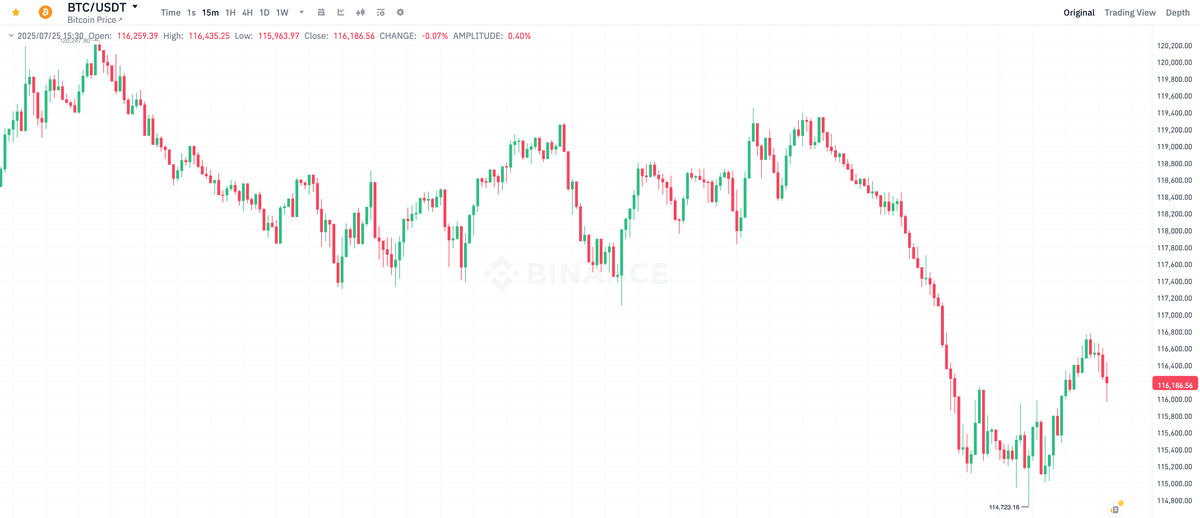The decline in the crypto market has indeed been significant. For example, yesterday Bitcoin was worth over $119,000, but today the local minimum for the cryptocurrency has become the line of $114,700.
Here is a 15-minute chart of the digital asset on the Binance exchange.

15-minute chart of Bitcoin's price.
The collapse occurred despite record liquidity growth, meaning the amount of money available in circulation. According to the Kobeissi Letter platform, the M2 money supply in the US reached a record high of $22.02 trillion. Since the beginning of 2025 until June, the indicator has increased by 4.5 percent.
Accordingly, the volume of assets suitable for investment is currently greater than ever. Analysts confirm that the growth of the money supply usually correlates with asset prices, as an increase in liquidity often ends in a capital influx into the markets, rising inflation, and increasing asset values.
However, that is not the case yet. Moreover, the digital asset market is showing weakness. Why is this happening?
The opinion on the situation was shared by Derek Lim, head of the research department at Caladan, a company engaged in market making and crypto trading. According to him, liquidity in the US is currently concentrated in pools and is not being used for investments.
Here is a quote from the expert as reported by Decrypt.
A significant portion of the $22 trillion is in money markets or short-term treasury bonds, rather than in risk assets — essentially, this is 'dry powder' that has not yet been turned into 'high-risk capital.'
Consequently, investors have not yet had enough time to shift capital into crypto, which falls into the category of risky assets.
Overall, analysts recommend exercising caution in the short term. According to them, the current volatility in the digital asset market is explained by trader fatigue and their desire to lock in profits after Bitcoin's recent rise to historical highs.
Here is a quote from Daniel Lu, the head of Republic Technologies.
We are observing increased activity in the options market and a growing risk of liquidations. Even minor price fluctuations can now trigger a cascade liquidation or a short squeeze, depending on the direction of movement.
It is worth noting that a cascade liquidation refers to a series of declines in a digital asset, triggered by the forced closure of trading positions of traders using borrowed capital from the exchange and betting on the asset's growth. In this case, longs are closed and sold, leading to another wave of decline.
In turn, this ends with new liquidations of other traders, causing prices to fall again.
Derek Lim notes a large number of long positions using borrowed funds from the exchange, which creates risks of a sharp market collapse in case of volatility. As the expert points out, the recent liquidation of trading positions in XRP for $89 million in one day vividly demonstrated the activation of forced sales.
Even despite abundant liquidity, the appetite for risk is decreasing. Traders are likely waiting for clarity before deploying capital again.
The analyst allows for a slowdown in the upward trend given the ongoing profit-taking. For example, Solana is particularly vulnerable to liquidation risk, as leverage is currently outpacing trader demand in the spot market.
However, Lim also considers the situation a healthy correction without any sign of the bull run in crypto ending.
We have just experienced a powerful rally, and the market needs time to consolidate. In the near term, we should expect volatility on all fronts, but in the long term, the thesis remains unchanged.